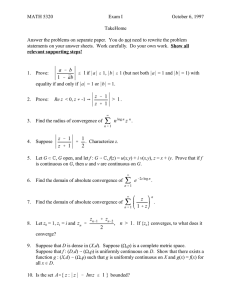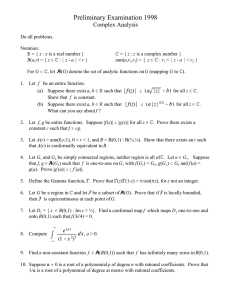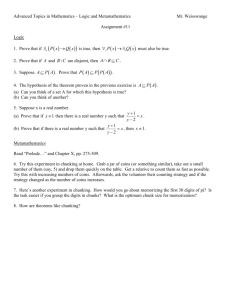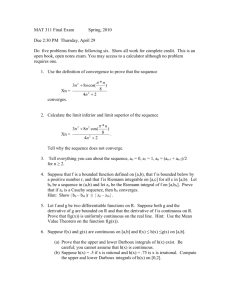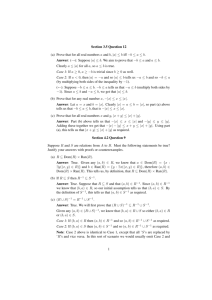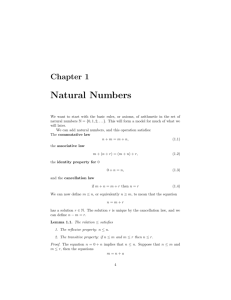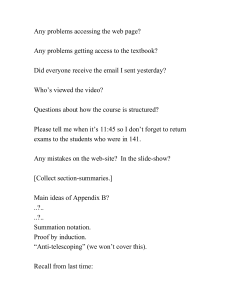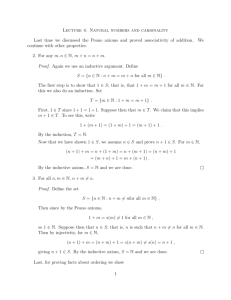Advanced Topics in Mathematics – Logic and Metamathematics Mr
advertisement
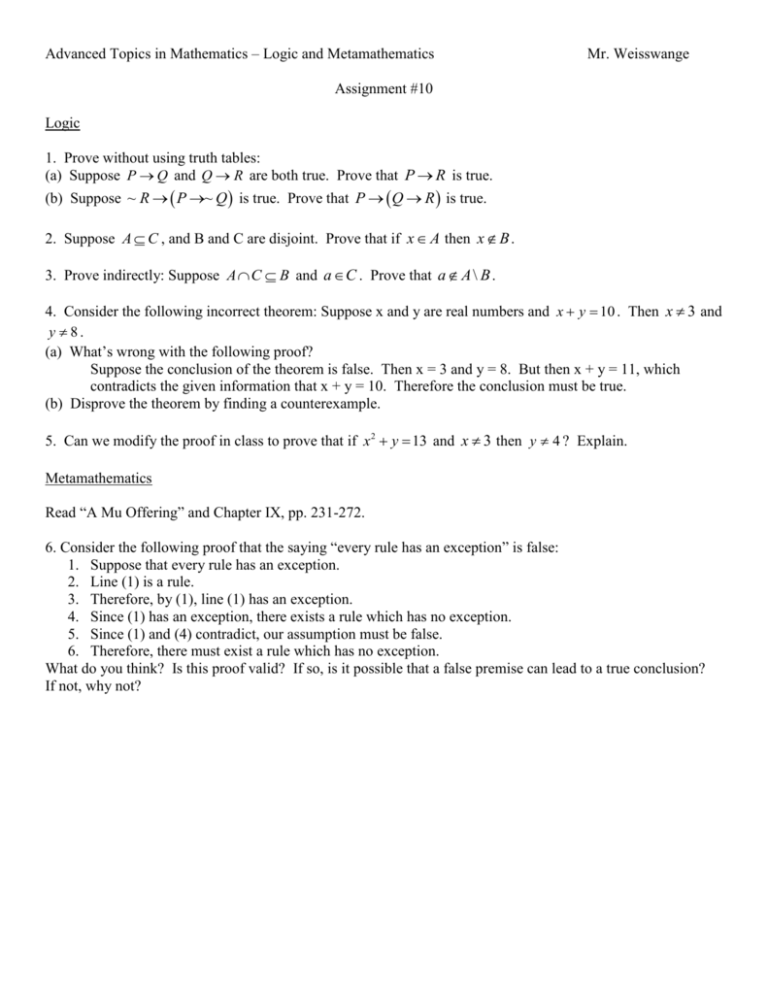
Advanced Topics in Mathematics – Logic and Metamathematics Mr. Weisswange Assignment #10 Logic 1. Prove without using truth tables: (a) Suppose P Q and Q R are both true. Prove that P R is true. (b) Suppose ~ R P ~ Q is true. Prove that P Q R is true. 2. Suppose A C , and B and C are disjoint. Prove that if x A then x B . 3. Prove indirectly: Suppose A C B and a C . Prove that a A \ B . 4. Consider the following incorrect theorem: Suppose x and y are real numbers and x y 10 . Then x 3 and y 8. (a) What’s wrong with the following proof? Suppose the conclusion of the theorem is false. Then x = 3 and y = 8. But then x + y = 11, which contradicts the given information that x + y = 10. Therefore the conclusion must be true. (b) Disprove the theorem by finding a counterexample. 5. Can we modify the proof in class to prove that if x 2 y 13 and x 3 then y 4 ? Explain. Metamathematics Read “A Mu Offering” and Chapter IX, pp. 231-272. 6. Consider the following proof that the saying “every rule has an exception” is false: 1. Suppose that every rule has an exception. 2. Line (1) is a rule. 3. Therefore, by (1), line (1) has an exception. 4. Since (1) has an exception, there exists a rule which has no exception. 5. Since (1) and (4) contradict, our assumption must be false. 6. Therefore, there must exist a rule which has no exception. What do you think? Is this proof valid? If so, is it possible that a false premise can lead to a true conclusion? If not, why not?

